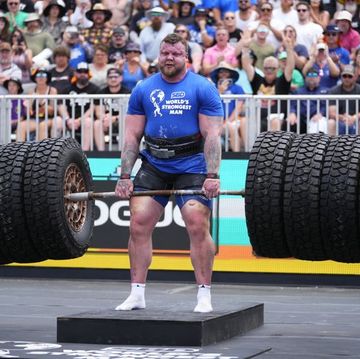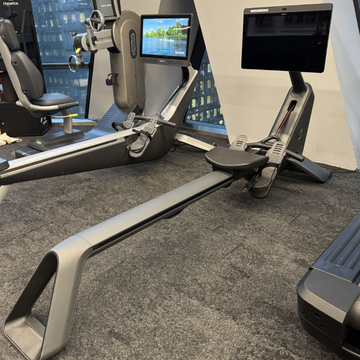EVERY TRAINING GOAL has a recipe for success. Odds are, you’re familiar with some of the key ingredients for many of them.
If your primary focus is building strength, you need to lift heavy enough to crank out just a few reps per set, for example. That's why routines favored by people like powerlifters chasing PRs are often low rep schemes, focused on every single lift. Muscular endurance, on the other hand, requires the opposite tack—lighter loads and lots of reps. Smack dab in the middle of that spectrum is hypertrophy (you might understand this better as the pursuit of muscular growth), where the focus winds up being on full range of motion and reaping as much stimulus from your movements as possible. But no matter what your goal is, there’s a common, critically important ingredient that many guys overlook: the amount of rest you take between sets.
Sports scientists call it “inter-set recovery,” and it’s during this time that your muscles clear metabolic waste and replenish fuel stores. As you can imagine—and as you’ve surely experienced—these rest periods have a huge impact on performance, and thus results. But here’s their true value: Just like reps and loads, rest periods can be tailored to help you reach your fitness goals faster. Here’s how to tailor yours to three of the most popular objectives of training.
How to Use Rest Periods for Your Workout Goals
For Beginners
Rest Time: 2 minutes to 2:30; 60 seconds to 90 seconds
If you're new to the gym and your focus is more on learning form, getting used to the dynamics of the space, and establishing a routine, aim to rest for two minutes to 2:30 for big compound exercises and 60 to 90 seconds for accessory movements (like isolation exercises).
When you take these rest periods, make sure that you're resting—that means not squeezing in unrelated stretches or other movements to keep your body busy, and not falling into the smartphone trap and scrolling past your allotted time. Instead, focus on preparing yourself for your next set. Get your equipment in order, take a seat if you need, and ready yourself to nail the reps.
Muscular Endurance
Rest Time: 30 seconds
If you’re training for muscular endurance—your muscles' ability to continue to contract before fatiguing—high reps combined with minimal rest is the way to go. You want to train your muscles to clear waste and replenish fuel quickly and to condition your cardiorespiratory system to circulate oxygen-rich blood as efficiently as possible. This is important for athletes of all types of backgrounds who want a balanced approach to their training.
To achieve these goals, research shows that you should rest no more than a half minute between sets. This rest time is reduced even more when you’re performing HIIT or circuit training, during which you should typically rest only long enough to transition between exercises in each round.
Strength and Power
Rest Time: 3 to 5 minutes
The textbook advice for maximizing strength gains is to lift heavy, do no more than six reps per set, and to rest at least three minutes per set with five minutes being the upper limit. Power training is similar with the exception of reducing your weight to increase the explosiveness of each rep.
Here's why: You want your muscles to recover as fully as possible between sets so they can generate maximum force during each of them. In so doing, you’ll target your type II muscle fibers, which are your largest. These fibers also have the greatest growth potential.
Hypertrophy (Muscle Gain)
Rest Time: 1 to 3 minutes
The classic advice for maximizing muscle growth (i.e., hypertrophy) is to rest one minute between sets of 8 to 12 reps.
But recent research suggests that three minutes might be the true sweet spot. That’s what scientists found in a small study published recently in the Journal of Strength and Conditioning Research. When they compared the training adaptations between men who rested one minute and three minutes between sets, they discovered that three minutes produced greater gains in both strength and hypertrophy. But it’s also important to remember that every body is different, so don’t hesitate to experiment a bit to find the rest period that works best for you.

















